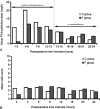Analgesic efficacy of intrathecal fentanyl during the period of highest analgesic demand after cesarean section: A randomized controlled study
- PMID: 27310958
- PMCID: PMC4998444
- DOI: 10.1097/MD.0000000000003827
Analgesic efficacy of intrathecal fentanyl during the period of highest analgesic demand after cesarean section: A randomized controlled study
Erratum in
-
Erratum: Medicine, Volume 95, Issue 24: Erratum.Medicine (Baltimore). 2016 Aug 7;95(31):e5074. doi: 10.1097/01.md.0000490009.39850.74. eCollection 2016 Aug. Medicine (Baltimore). 2016. PMID: 31265618 Free PMC article.
-
Erratum: Analgesic efficacy of intrathecal fentanyl during the period of highest analgesic demand after cesarean section: A randomized controlled study: Erratum.Medicine (Baltimore). 2016 Sep 9;95(36):e4713. doi: 10.1097/01.md.0000496599.67747.13. eCollection 2016 Sep. Medicine (Baltimore). 2016. PMID: 31265637 Free PMC article.
Abstract
Cesarean section (CS) is one of the most common surgical procedures in female patients. We aimed to evaluate the postoperative analgesic efficacy of intrathecal fentanyl during the period of greatest postoperative analgesic demand after CS. This period was defined by detailed analysis of patient-controlled analgesia (PCA) usage.This double-blind, placebo-controlled, parallel-group randomized trial included 60 parturients who were scheduled for elective CS. Participants received spinal anesthesia with bupivacaine supplemented with normal saline (control group) or with fentanyl 25 μg (fentanyl group). To evaluate primary endpoints, we measured total pethidine consumption over the period of greatest PCA pethidine requirement. For verification of secondary endpoints, we recorded intravenous PCA requirement in other time windows, duration of effective analgesia, pain scores assessed by visual analog scale, opioid side effects, hemodynamic changes, neonatal Apgar scores, and intraoperative pain.Detailed analysis of hour-by-hour PCA opioid requirements showed that the greatest demand for analgesics among patients in the control group occurred during the first 12 hours after surgery. Patients in the fentanyl group had significantly reduced opioid consumption compared with the controls during this period and had a prolonged duration of effective analgesia. The groups were similar in visual analog scale, incidence of analgesia-related side effects (nausea/vomiting, pruritus, oversedation, and respiratory depression), and neonatal Apgar scores. Mild respiratory depression occurred in 1 patient in each group. Fewer patients experienced intraoperative pain in the fentanyl group (3% vs 23%; relative risk 6.8, 95% confidence interval 0.9-51.6).The requirement for postoperative analgesics is greatest during the first 12 hours after induction of anesthesia in patients undergoing CS. The addition of intrathecal fentanyl to spinal anesthesia is effective for intraoperative analgesia and decreases opioid consumption during the period of the highest analgesic demand after CS, without an increase in maternal or neonatal side effects. We recommend using intrathecal fentanyl for CS in medical centers not using morphine or other opioids intrathecally at present.
Conflict of interest statement
The authors have no conflicts of interest to disclose.
Figures
References
-
- Rowe-Murray HJ, Fisher JR. Operative intervention in delivery is associated with compromised early mother-infant interaction. BJOG 2001;108:1068–75. - PubMed
-
- Aluri S, Wrench IJ. Enhanced recovery from obstetric surgery: a U.K. survey of practice. Int J Obstet Anesth 2014;23:157–60. - PubMed
-
- Wrench IJ, Allison A, Galimberti A, et al. Introduction of enhanced recovery for elective caesarean section enabling next day discharge: a tertiary centre experience. Int J Obstet Anesth 2015;24:124–30. - PubMed
-
- Goma HM, Flores-Carrillo JC, Whizar-Lugo V. Whizar-Lugo V. Spinal additives in subarachnoid anaesthesia for cesarean section. Topics in Spinal Anaesthesia: InTech 2014.
-
- Hamber EA, Viscomi CM. Intrathecal lipophilic opioids as adjuncts to surgical spinal anesthesia. Reg Anesth Pain Med 1999;24:255–63. - PubMed
Publication types
MeSH terms
Substances
LinkOut - more resources
Full Text Sources
Other Literature Sources
Medical



